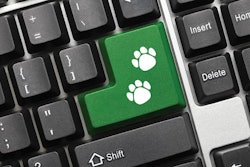
By now it’s well known that pet adoptions have spiked all over the world in response to COVID-19 lockdowns. With more people working from home than ever and children locked in to distance learning (and now summer vacations, depending on where you are), it seems that a significant number of people decided that now was the best time to bring home a new furry (or feathery or scaly) friend.
Just how many animals are we talking about?
According to Packaged Facts data in their report, “U.S. Pet Market Outlook 2020–2021 (June 2020 Update),” among adults overall in the U.S., 5% adopted a dog and 4% adopted a cat in the three-month period corresponding to the initial impact of COVID-19. Four percent of adults adopted other types of pets, including fish, birds, small mammals/animals and reptiles/amphibians.
All of this growth will bring the number of pet-owning households to nearly 71 million by the end of 2020, according to Packaged Facts, or 56% of households overall. Dog- and cat-owning households, which are projected to make up 96% of pet-owning households overall, will grow 5% and 4%, respectively. Interestingly, the types of pets expected to see the highest growth in ownership are reptiles (7% growth over 2019, or 2.866 million homes) and small mammals (6% growth, or 2.758 million homes).
How can your company make the most of it?
Focus on pet owners and what they need to hear right now. Packaged Facts suggests that marketers and retailers of pet products and services “could reap rich and long-term rewards from a marketing campaign laying out the myriad ways in which pet ownership enhances human health and well-being.” Established pet owners (at least 90% pf them) already understand this, but new pet owners or those who took in fosters from shelters and are now hoping to keep them might need a bit of a push in the right direction.
“Via an all-hands-on-deck, rising-tide-lifts-all-boats approach, the industry may very well transform the current — and otherwise possible long-term — trend of declining pet ownership into a pet population boom at a time when the pet market overall still has much forward momentum,” said Packaged Facts in its report.
Briefly: 5 current shifts in consumer behavior due to COVID-19
In a June 2020 survey conducted by McKinsey & Company, a U.S.-based management consulting firm, the company studied U.S. consumer sentiment during the global pandemic and how it has shifted consumer behavior. The survey found that said behavior has been affected in five key ways:
- A shift to value and essentials: More than 50% of Americans believe it will take longer than six months for the economy to recover and are adjusting how and where they spend accordingly (and more conservatively).
- Flight to digital and omnichannel: Most categories have seen 15–30% growth in consumers shopping online, and consumers say they intend to stay there even after the pandemic is over.
- Shock to loyalty: 75% of consumers have tried different stores, websites or brands during the pandemic and more than 70% of those consumers say they expect to integrate these places to shop and brands in their post-COVID-19 lives.
- Health and “caring” economy: Consumers are looking for companies keeping their employees safe and ensuring you do right by your people means consumers are more likely to do right by you.
- Homebody economy: Many consumers have found at-home solutions to regular out-of-home activities and more than 50% intend to continue some of those habits post-pandemic.

















